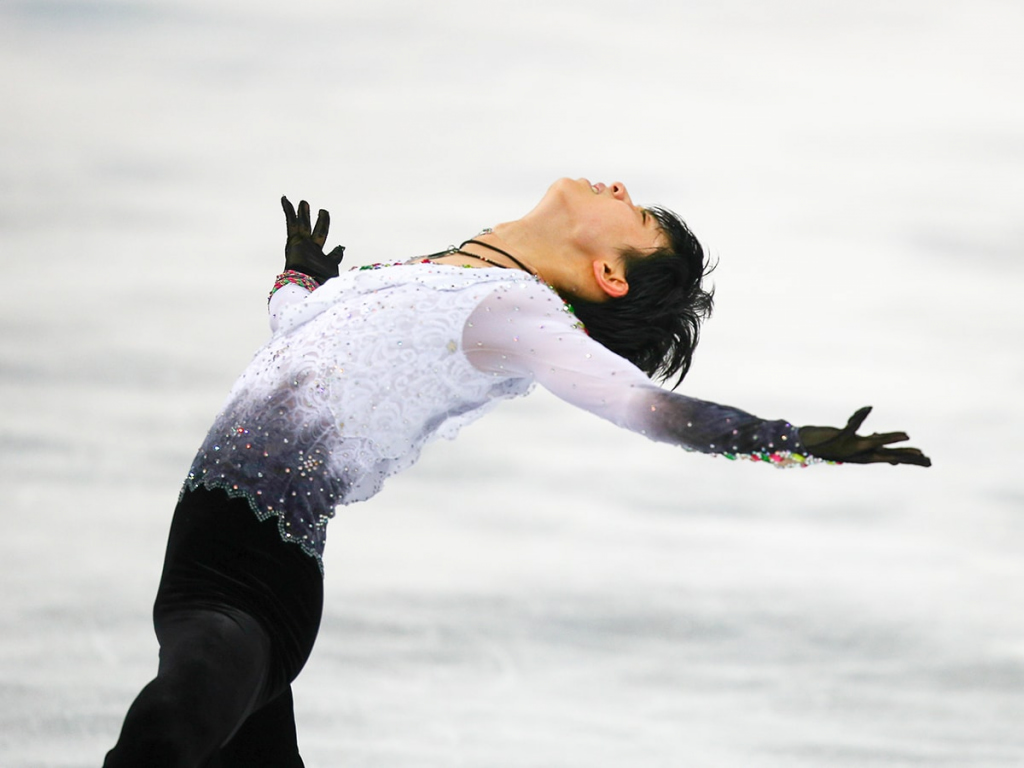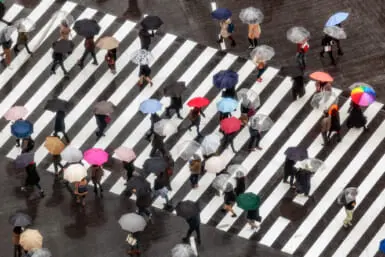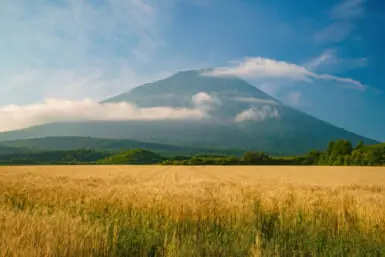The four gold medals won by Japan at the 2018 PyeongChang Games was double the amount the country managed in the past four Winter Olympics’ combined. The Northeast Asian nation picked up a record 13 medals in total, though it was the performances of Yuzuru Hanyu, Nao Kodaira, Nana Takagi and the women’s speed skating pursuit team that truly stood out. So how much do we know about these Olympic champions? Weekender decided to take a closer look at their careers, starting with the golden boy of skating.
Yuzuru Hanyu
An extraordinary talent who began skating at the age of four, Yuzuru Hanyu made his senior bow while still at junior high school. He came to the public’s attention in February 2011 after finishing runner-up to Olympic bronze medalist Daisuke Takahashi at the Four Continents Figure Skating Championships. It was a momentous occasion for Hanyu as he recorded a new personal best; however, three weeks later that achievement seemed like a distant memory.
In the afternoon of March 11, 2011, the then 16-year-old skater was practicing at his local rink in Sendai as usual. At 2:46pm the building started to shake violently so he quickly ran outside with his skates still on. The Great East Japan Earthquake and Tsunami of 2011 caused untold devastation in the region and badly damaged the rink, but Hanyu managed to escape uninjured. He would spend the next few days with his family in an evacuation center as their home was without either water or electricity.
“I was in fear at the very moment the disaster struck,” wrote Hanyu in his autobiography Blue Flames. “The buildings were being damaged, and I was in fear of being buried under them and killed, thinking that my life was so short.”
Hanyu trained in Yokohama and Aomori while his local rink was being fixed. A month after the disaster he took part in an ice show along with fellow skaters to raise money for victims of the disaster. He raised additional funds by selling personal belongings at the event while the proceeds from his two autobiographies went to the reconstruction of Sendai’s ice rink. In February 2015 he became the spokesperson for the reconstruction efforts led by the Japanese Red Cross Society.
On the ice, his performances just kept getting better. Following a bronze medal at his debut World Championships in 2012, Hanyu started working with Canadian coach Brian Orser, a two-time Olympic silver medalist who helped Korea’s Kim Yuna win gold at the 2010 Vancouver Games. Orser increased the teenager’s daily on-ice training from 1-2 to 3-4 hours and it soon had the desired effect.
Hanyu broke the short program world record on several occasions in the lead up to the 2014 Sochi Olympics. He then smashed it again at the Games itself, becoming the first individual to score over 100. A clinical performance in the free skating competition secured the gold, making him Japan’s first ever male figure skating Olympic champion and the youngest winner since Dick Button in 1948. He flew home to celebrate with more than 90,000 fans at a parade in Sendai before rounding off the season by winning his first World Championship.
Over the next few years, the records just kept tumbling. He became the first skater to break the 200-point barrier in the free program as well as the mystical 300-point mark in the combined score. He is also the only man to have won four consecutive Grand Prix Finals.
It seemed inevitable that Hanyu would go to South Korea and become the first male figure skater for 66 years to defend to defend an Olympic title. His fans were on edge last November, though, when an ankle injury threatened to derail his preparations. They needn’t have worried. Hanyu was his normal majestic self in PyeongChang, finishing well ahead of compatriot Shoma Uno and Spain’s Javier Fernandez, who finished second and third. The next challenge for Winnie the Pooh’s most famous fan is to land a quadruple axel, a feat no skater has ever achieved in a competition.
Nao Kodaira
On January 20, 2018, less than three weeks before the start of the PyeongChang Olympics Nao Kodaira’s dear friend and teammate Miyako Sumiyoshi passed away. The pair, who had become close during their university days and both raced for Japan at the 2014 Sochi Games, went out for dinner together at the beginning of the year. The news of Sumiyoshi’s death came as a massive shock to Kodaira, but she was determined not to let grief get in the way of her objectives and vowed to win gold in South Korea for her late pal.
The 31-year-old skater was the favorite in both the 500 and 1,000 meters but could only manage a silver in the latter as Jorien ter Mors broke the Olympic record to secure her third gold medal. Kodaira and teammate Miho Takagi, who finished third, both admitted to feeling frustrated at not being able to take home the top prize.
Despite being a world record holder in the 1,000 meters, Kodaira’s preferred event is the 500. She’d been the dominant force in the discipline throughout the season and would never get a better chance of winning gold. Coming up against two-time Olympic champion and home favorite Lee Sang-hwa, the pressure was on, though it didn’t show. Kodaira was coolness personified, finishing the race in an Olympic record time of 36.94 seconds. It was too quick for Lee who had to settle for silver and a hug from the Japanese skater.
At the press conference the gold medalist was asked about Sumiyoshi. “She has regularly been in my thoughts while I’ve been here,” Kodaira said. “Of course, I can’t forget. Even when I try not to think about her she appears in my mind. That said, as captain of the Japanese team I knew I had to go into my races in a focused state.”
She added, “I don’t know whether it’s okay for me to say this, but Sumiyoshi’s people told me before the Olympics that she had said to them if I get the gold it would be the same as her winning it. I managed to do it. I just wish I could have told her about it in person. It’s so sad that I’m not able to do that.”
Both Kodaira and Sumiyoshi trained under the tutelage of Professor Masahiro Yuki at Shinshu University in Nagano. Kodaira continued working with him after graduating and qualified for the 2010 Olympics in Vancouver where she won a silver medal in the team pursuit. A disappointing showing in Sochi four years later prompted her to move to The Netherlands where she competed for a professional club and was coached by three-time Olympic gold medalist Marianne Timmer.
While in Holland Kodaira was given the nickname Boze Kat (Dutch for “angry cat”) due to her powerful and flexible skating style. She learned the language and developed her skills before returning to Japan as a more accomplished skater. Ahead of the Olympics Kodaira won every ISU World Cup 500-meter race in the 2017/18 season. Her next goal is the 500-meter world record, which currently belongs to Lee.
Nana Takagi/Team Pursuit
At the age of 15, Miho Takagi became the first junior high school speed skater to represent Japan at the Olympics, competing in the 1,000 and 1,500 meters in Vancouver. Despite finishing outside the top 20 in both, the potential was there for all to see. Four years later the teenager failed to build on that early promise, and missed out on the 2014 Sochi Games.
The one member of the family that did manage to make the team for Russia was Nana Takagi. Spurred on after enviously watching her younger sister perform in Canada, she qualified for the 1,500 meters where she placed 32nd. She was also selected for the Japan team pursuit squad alongside Misaki Oshigiri, Maki Tabata and Ayaka Kikuchi. They narrowly missed out on a medal to Russia in the race for bronze.
After Sochi, the Takagi sisters finally started racing for the national team together. Alongside Kikuchi they won gold at the 2015 World Championships, impressively defeating the Netherlands in their own back yard. It was the start of an intense rivalry between the two nations. Holland secured the next two world titles, but victory was no longer a foregone conclusion.
Coached by Dutchman Johan de Wit, the Japanese team was now a serious threat and the addition of Ayano Sato strengthened the squad further. While they didn’t have the power to match their rivals, they were able to hold their own because of their technical ability. Research done by the Japan Institute of Sports Sciences (JISS) proved useful as it helped them minimize air resistance during races.
Japan began to dominate in 2017, winning numerous world cups and breaking the world record on three separate occasions. In spite of this Holland remained favorites to retain the Olympic title in PyeongChang as both teams comfortably advanced to the finals. Kikuchi, who performed admirably in the semi-finals, was replaced by Sato for the Netherlands clash. It was an intense race with just 0.13 seconds separating the teams at the end. Japan had just about done enough and set a new Olympic record to boot.
It was a third medal of the Games for Miho Takagi, who also won a silver in the 1,500 meters and a bronze in the 1,000 meters. Not to be outdone, sister Nana went one better by taking home gold in the inaugural mass start speed skating event. It was a moment to cherish for a 25-year-old skater who has spent much of her career in her sister’s shadow. Miho has more medals, but Nana is the only individual Olympic champion in the Takagi household. The sibling rivalry has helped push them both to greatness. From an individual and team perspective, it’s been a wonderful Olympics for the two ladies. Hopefully it will be more of the same in Beijing in four years’ time.
Main Image: Iurii Osadchi/Shutterstock.com









